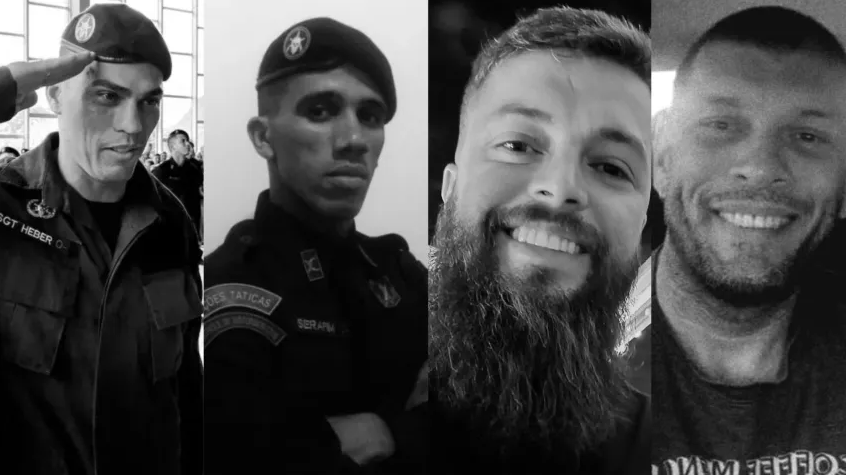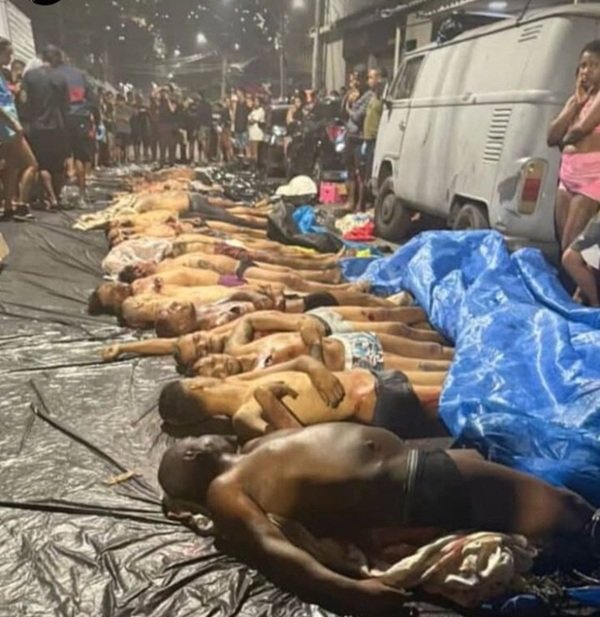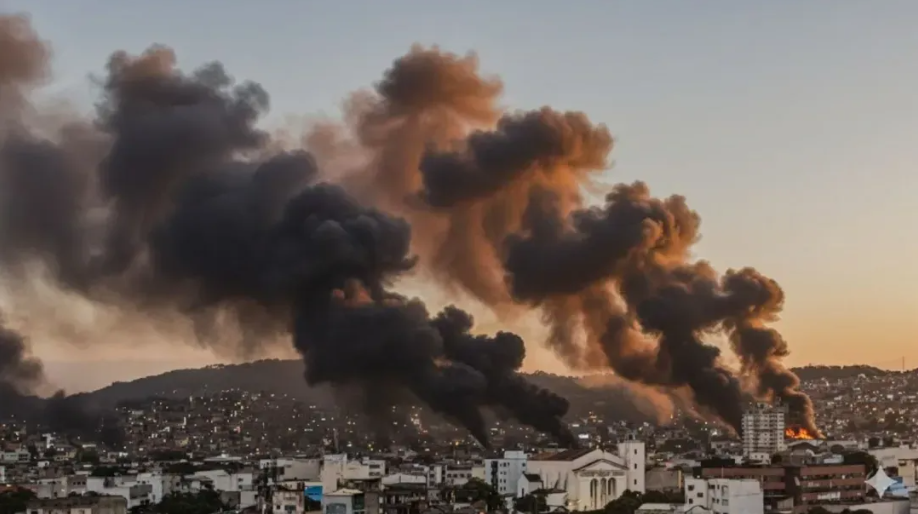The October 28 “Operation Containment” will remain in history as an extreme example of how violent the fight against organized crime in Rio has become. It exposed the full scale of organized crime entrenched in Rio de Janeiro’s favelas and the extreme violence used to confront it. Launched by state police forces against the Red Command’s headquarters in the Penha and Alemão complexes, the operation resulted in 121 deaths—making it the deadliest in the country’s history—and revealed the deep militarization of both criminal factions and law enforcement. What began as a targeted crackdown on a powerful drug network quickly evolved into a national controversy over public security, human rights, and the growing warlike conditions within Brazil’s urban centers.
This Content Is Only For Subscribers
To unlock this content, subscribe to INTERLIRA Reports.
Operation “Contaiment”

The police operation carried out in Rio de Janeiro’s Alemão and Penha complexes became the deadliest in Brazil’s history, surpassing the 1992 Carandiru massacre, with 121 deaths, including four police officers. The action mobilized 2,500 officers and managed to arrest 113 suspects, apprehend 120 firearms, including 93 automatic rifles, valued at around R$9.3 million; explosives, ammunition, and tons of drugs. The seized rifles are distributed among AR15 (5.56), Benelli MR1, AK47 (AK), G3, AR10, FAL, and Mauser platforms. All have long operational ranges, with high destructive potential. Even though some important members of the gang were arrested, the main operational leader, Edgar Alves de Andrade, known as “Bear”, and other high-profile commanders, Pedro Paulo Guedes, o Pedro Bala; Juan Breno Ramos, BMW; Carlos da Costa Neves, Gardenal; Luciano Martiniano da Silva, Pezão, e Wilton Carlos Rabello Quintanilha, Abelha, remain at large.
Fighting on Mercy Hill

The police shifted the confrontation with CV members from urban zones to the forested Mercy Hill area, a known stronghold for the faction’s “drug tribunals.” Governor Cláudio Castro said the strategy aimed to “minimize harm” to civilians, with BOPE officers forming a “wall” to push suspects into the woods. The region, also used by local groups for organic farming, became the main site where more than 60 bodies were later found. Authorities reported that many suspects wore camouflage similar to police uniforms, while residents retrieved several bodies themselves, raising questions about the handling of evidence and the scale of the violence. Some dead individuals found later by relatives had their heads and other body parts cut off, and signs of extreme violence. The fact led to accusations from both sides. Residents say that the police tortured the suspects, while the authorities claim that the violence was committed by criminals to stain the forces’ reputation.
Plunging the City into Chaos
During the “Containment” police operation in Rio de Janeiro, widespread gang retaliation was reported. Criminals blocked 35 streets across the city with burning debris and hijacked vehicles: buses, trucks, cars etc. Most public services remained operational, but panic hit the population hard, and citizens decided to leave for their homes at the same time, causing widespread traffic jams, overcrowded public transport, and incidents of panic. Fake messages about unrealistic incidents of violence, threats of mass robberies, helped spread fear and prompted people to leave early, exposing themselves on the streets right in the moment when blockades were still being carried out by criminals throughout Rio.
Violent Rule and Expansion Wars
The court decision that authorized Rio de Janeiro’s “Operation Containment” detailed a violent and hierarchical structure of the Red Command (Comando Vermelho) controlling the Penha complex and nearby communities through systematic torture, armed intimidation, and drug trafficking. It was ordered the preventive arrest of more than 60 suspects, including leaders known as Doca, Gardenal, Grandão, and BMW, citing videos, messages, and intercepted calls that revealed executions, torture sessions, and coordination of armed patrols. The ruling described the group’s dominance over residents, its expansion into militia areas, and the ongoing risk posed by its members, leading the court to justify the arrests as necessary to preserve public order and dismantle the faction’s criminal network.
In the past two years, the Red Command (CV) has attacked at least ten communities in the new Southwest Zone as part of an offensive to establish a “control belt” stretching from Recreio dos Bandeirantes to the Tijuca Massif. This strategy aims to secure a territorial corridor by enabling escape routes through the Tijuca Forest while extending access to expanding urban and economic areas. The criminal group is also moving towards communities in the Baixada Fluminense and in the North Zone, attempting to obtain full control of the Greater Tijuca area. Praça Seca is another battlefield in this war, suffering from constant fights for at least 4 years.
National Headquarters
The Penha and Alemão Complexes form the Red Command’s National Headquarters. There, criminals are responsible for distributing 10 tons of drugs and from 50 to 70 rifles to accomplices monthly in other communities dominated by the same criminal faction in Rio.
In the last 15 years, especially after the UPP project, the criminal faction has expanded nationally, reaching around 25 states. It is from these complexes that the orders, decisions, and guidelines of this faction originate for all other states where the faction operates. It is also there that shooting training, guerrilla tactics, weapons handling, and computer skills training are conducted for these criminals who come from outside the state to be ‘trained’ and return to their states of origin to implement the faction’s culture there. Therefore, it is not by chance that, among the identified dead, 54 are from other states (15 from Pará, 9 from Amazonas, 11 from Bahia, 4 from Ceará, 7 from Goiás, 4 from Espírito Santo, 1 from Mato Grosso, 1 from São Paulo, and 2 from Paraíba).
Analysis:
“Operation Containment” marked a new level of escalation in Rio de Janeiro’s security crisis, exposing the Red Command’s entrenched criminal infrastructure and the state’s increasingly militarized response. The operation’s 121 deaths and large-scale deployment highlighted the blurred line between law enforcement and warfare, while citywide chaos and blockades demonstrated how quickly organized crime can paralyze essential services and disrupt urban life.
The Red Command’s command structure and expansion strategy show a high degree of coordination, linking Rio’s favelas to national trafficking routes and training networks. The group’s use of guerrilla tactics, advanced weaponry, and interstate recruitment signals a sophisticated criminal ecosystem capable of sustaining violence despite leadership losses. This entrenched presence increases the likelihood of new confrontations and sustained instability across key industrial and residential areas.
For corporations, the implications include elevated operational, reputational, and logistical risks. Supply chains, employee mobility, and asset security remain vulnerable to sudden disruptions during large-scale operations or retaliatory violence. Strengthening crisis management, route diversification, and real-time intelligence capabilities is essential to mitigate exposure in an environment where state and criminal actors are locked in an increasingly urbanized conflict.
Sources: A Folha de SP; UOL; O Globo.




